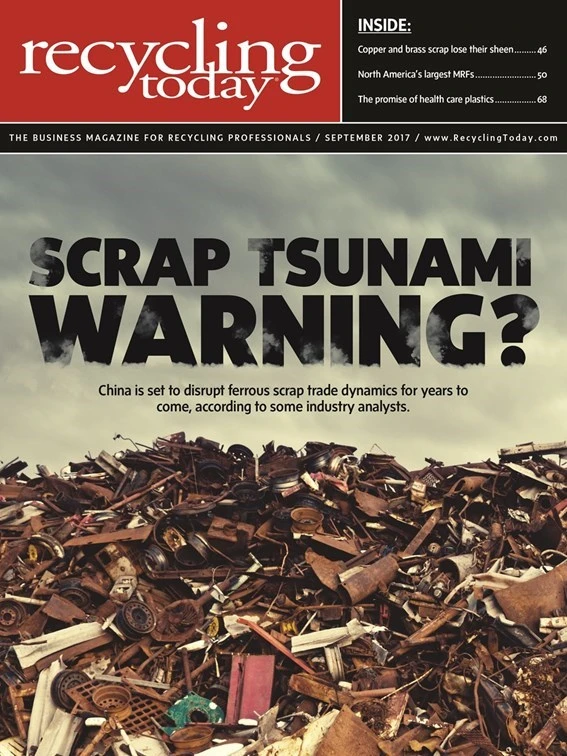
Despite the ongoing trend toward lighter packaging for consumer goods and the ongoing decline in newspaper and magazine circulation and bulk mail, a number of the material recovery facilities (MRFs) on this version of Recycling Today’s list of the largest MRFs in North America increased the tonnage of recyclables they recovered and shipped in 2016. The majority of MRFs, however, did see volume decline relative to the last edition of the list, which was which was published in September 2015.
The rankings on this year’s list are based on the total tonnage of recyclables shipped in 2016 as reported by the facilities. Estimates were necessary in some cases because we had not received replies to our request for this information as of press time. Additionally, the figure for FCC Environmental’s Dallas MRF is an estimate of the total volume it will process in 2017.
At No. 1 on this year’s edition of the list, Sims Municipal Recycling’s Sunset Park MRF in Brooklyn, New York, reported the most notable growth compared with the previous version of our list. The company increased its tons shipped from 140,000 in 2014 to 241,884 in 2016.
In addition to Sims’ Sunset Park, three other MRFs among North America’s 15 largest saw the tons of recyclables they shipped in 2016 grow. These include Casella Waste Systems’ Charlestown, Massachusetts, MRF, which shipped 204,580 tons in 2016 compared with 184,939 tons in 2014; Rumpke Recycling’s Cincinnati MRF, which shipped 171,520 tons in 2016 compared with 166,996 tons in 2014; and Waste Management’s (WM’s) Tacoma, Washington, MRF, which shipped 165,489 tons of recyclables in 2016 compared with 157,478 tons in 2014.
Speaking of WM, 26 of the company’s 95 MRFs (as of the end of 2016) appear on this edition of the list. Other MRF operators with multiple facilities on the list include Charlotte, North Carolina-based ReCommunity, with six; Phoenix-based Republic Services, with six; and The Woodlands, Texas-based Waste Connections, with four.
The Republic Services name likely will make additional appearances on future versions of this list. At press time, the company announced that it had entered into a definitive agreement to acquire ReCommunity Holdings II Inc. Republic says ReCommunity’s assets and expertise will complement its existing recycling collection and processing operations.
The purchase involves 26 recycling centers in 14 states. Combined, these facilities recover approximately 1.6 million tons of recyclables annually.
The transaction also includes the assumption of multiple long-term municipal agreements with processing-fee-based structures, which aligns with Republic’s recycling pricing model.
As noted earlier, however, most of North America’s 75 largest MRFs saw the tons of recyclables they shipped in 2016 decline compared with two years earlier in part because of the use of lighter-weight
Looking again at the 15 largest MRFs on this list for examples, Resource Management Cos’. Chicago Ridge, Illinois, MRF saw the volume of recyclables it shipped in 2016
The changing nature of the incoming residential recycling stream presents an ongoing challenge to MRF operators and their suppliers, though it appears some of the largest MRFs in North America have managed to buck the trend and increase their tonnages.



Explore the September 2017 Issue
Check out more from this issue and find your next story to read.
Latest from Recycling Today
- Lautenbach Recycling names business development manager
- Sebright Products partners with German waste management equipment company
- WasteExpo transitions to biennial format for enhanced experiences
- Study highlights progress, challenges in meeting PCR goals for packaging
- Washington legislature passes EPR bill
- PureCycle makes progress on use of PureFive resin in film trials
- New copper alloy achieves unprecedented high-temperature performance
- Gränges boosts profits and sales volume in Q1 2025





